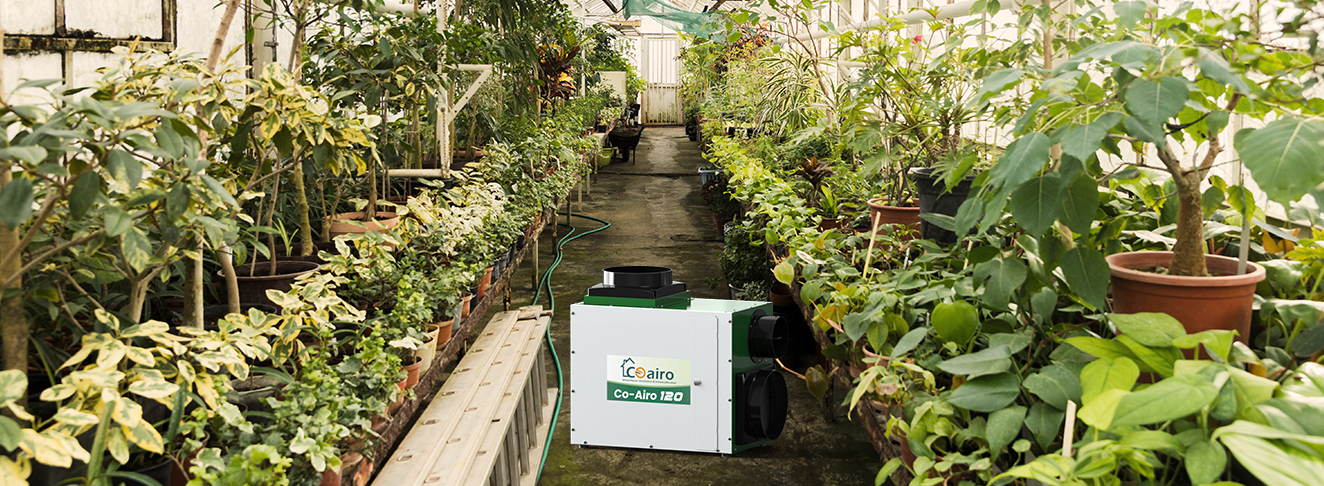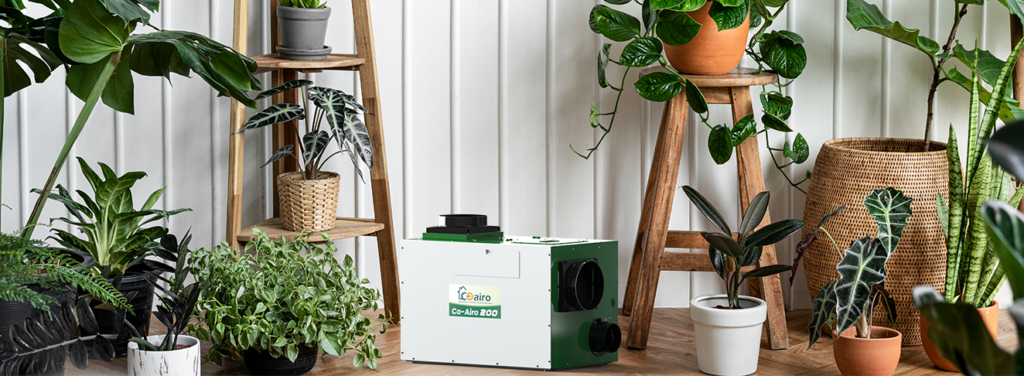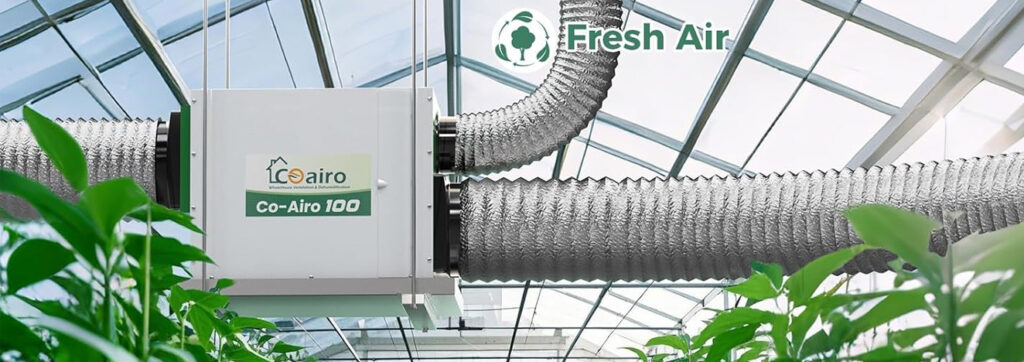When choosing the most suitable dehumidifier for a grow tent, key factors to consider include dehumidification capacity, temperature range, noise level, smart control features, and energy efficiency. An ideal dehumidifier should have sufficient dehumidification capacity (such as removing 10-20 liters of water per day), be able to operate stably in a 20-30°C environment, and produce noise levels under 50 decibels to avoid disturbing plant growth. Additionally, automatic humidity regulation and energy-efficient design can enhance the device’s practicality and cost-effectiveness.
Let’s find out in detail the best dehumidifiers for plant growth tents, their role in agricultural cultivation, what to consider when choosing one, and their impact on plant growth.
What are the Best Dehumidifiers for Plant Grow Tents?
To deal with moisture-related issues effectively, you should choose a high-quality dehumidifying unit that fits the size and conditions of your grow space. For decades, we have been testing different dehumidifiers in collaboration with growers and greenhouse owners. Therefore, we confidently recommend units with proven results.
1. Small Grow Ten Solutions
For smaller grow tents, a compact dehumidifier is an ideal choice. These units are typically energy-efficient, quiet, and low-maintenance. They are capable of removing an adequate amount of moisture each day, helping to maintain optimal humidity levels for healthy plant growth. Since smaller spaces don’t demand heavy-duty dehumidification, a compact unit can effectively remove excess moisture without consuming too much energy or taking up valuable grow space.
2. Medium Grow Ten Solutions
For medium-sized grow tents, you’ll need a dehumidifier with higher moisture removal capacity. These devices can handle a larger moisture load, removing more water daily while maintaining good airflow within the tent. They’re typically designed to be compact, easy to use, and quick to set up, making them a reliable choice for medium-sized grow tents. They provide the right balance of performance and space efficiency, making them perfect for growers with moderate humidity control needs.
3. Large Grow Ten Solutions
Larger grow spaces require more powerful dehumidification systems. Heavy-duty dehumidifiers are essential for quickly and effectively removing large amounts of moisture, ensuring a dry and stable environment for plant growth. These devices are commonly used in large grow tents and greenhouses, where humidity control is critical for plant health. When choosing a heavy-duty dehumidifier, it’s important to consider factors like drainage options and energy consumption, as these units need to manage a larger volume of moisture.
When selecting a dehumidifier, be sure to consider the actual size of your grow tent, the humidity requirements, and the energy efficiency of the unit. Proper placement within your tent will help improve dehumidification efficiency while ensuring you don’t take up too much precious growing space.
The Role of Dehumidifiers in Agricultural Cultivation
How do dehumidifiers control humidity in grow tents? Dehumidifiers use two key technologies to maintain ideal growing conditions. Desiccant dehumidifiers use moisture-absorbing material to remove water from the air while refrigerant units rely on cooling coils to condense and extract moisture. Both types effectively control humidity and create perfect indoor conditions for plant growth.
So, the role of high-quality dehumidifiers is to…
1. Protect against Mold and Mildew
Mildew and mold quickly destroy your crops and reduce yields if left unchecked. So, you should use suitable dehumidification systems to remove excess moisture from the air and ensure a healthy environment for the plants. A properly sized dehumidifier controls humidity levels, discourages fungal growth, and supports healthy plant development.
2. Enhance Air Circulation
Besides moisture control, a dehumidifier helps improve airflow throughout your grow tent. This enhanced air movement strengthens plant stems, promotes better nutrient uptake, and distributes temperature humidity. Plants release moisture as they transpire. This makes indoor air overly humid and stagnant. A dehumidifier prevents such conditions and creates a more dynamic setting for plant growth.
3. Integrate with Climate Control Equipment
The latest grow tent dehumidifiers seamlessly integrate with other climate control systems. You can pair them with air purifiers and HVAC systems to form a comprehensive climate control solution. This integration reduces the strain on your central heating and cooling system. Moreover, smart controls ensure precise coordination between different components. This helps maintain optimal conditions with minimal power waste.
Factors to Consider When Choosing a Dehumidifier
Here are key factors to consider when choosing a dehumidifier:
1. Capacity and Size Matching
Choosing the right dehumidifier capacity is key to effective humidity control in your growing space. So, you need to select the right dehumidifier capacity that fits your grow tent size. A model that’s too small will struggle to remove moisture while an oversized one over dehumidifies and wastes energy. So, calculate the needed capacity based on your grow space size and daily moisture production.
2. Choosing the Right Dehumidifier Type
A refrigerant unit is an energy-efficient option and works best in warmer conditions typically above 65°F. This makes it an ideal option for most grow tent setups. Since refrigerant dehumidifiers use cooling coils to condense moisture, their coils require regular maintenance. Whereas, desiccant models are slightly less energy-efficient and perform better in cooler conditions. Typically, these units are effective in temperature-sensitive settings.
3. Energy Efficiency and Cost Management
ENERGY STAR-certified units typically use up to 20% less energy than regular dehumidifiers. Look for such a model to minimize your operating costs without compromising quality and performance. For sustainable operation, check the dehumidifier’s power consumption rating and compare it against your space’s overall energy budget.
4. Key Features for Grow Tent Dehumidifiers
The auto shut-off feature protects your device while the continuous drainage option eliminates the need for manual water removal. Moreover, smart features like programmable timers, and digital displaces mobile applications offer precise control over your grow space. More features such as adjustable fan speed control and directional air outlets help you better optimize your grow tent environment.
When buying a dehumidifier for your grow tent, keep all these points in mind. The more features your unit has, the better and smoother control you’ll have over your indoor conditions.
Potential Impact of Whole-House Dehumidifiers on Plant Growth
Whole-house dehumidifiers deliver excellent results in larger cultivation operations. They directly connect to your existing ductwork system. This provides comprehensive humidity control throughout multiple grow areas. While a standard dehumidifier for tents excels in targeted humidity treatment, a whole home system helps ensure consistent humidity across your entire space.
Whole-home dehumidifiers have a significant impact on plant growth, particularly in large-scale operations. They help maintain consistent humidity levels across multiple spaces and reduce stress due to moisture fluctuations. This way, plants grow in a stable and controlled environment. These units integrate with existing HVAC systems. This offers better moisture control, even air distribution, and precise humidity control. This smoothness promotes healthier plants, discourages mildew, mold, and other pathogens, and supports optimal photosynthesis transpiration processes. As a result, your plants experience better growth, higher yields, and reduced risks of diseases.
Conclusion
When choosing a perfect solution, you need to carefully consider factors such as capacity, space conditions, energy efficiency, and advanced features. The right model protects your investment, creates a conducive environment, maximizes yield, and promotes healthy plant development.
Remember successful indoor cultivation depends on maintaining optimal humidity levels and proper airflow. A high-quality dehumidifier is the key to achieving this. So, choose a unit that meets your specific needs and integrates seamlessly with your existing setup.


